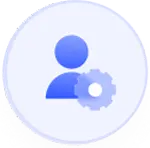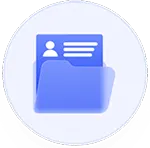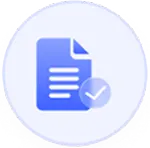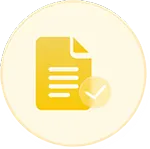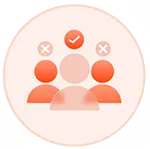In this rapidly changing world of modern business, it is very important to stay ahead of the curve. This requires more than simply experience and intuition. Ask a few questions to yourself.
How well do you know your employees?
Are you aware of what motivates them, what drives their potential, and how they perform?
The answers to these simple questions could make the difference between success and stagnation in the complex game of modern business, where every step counts.
In today’s context data is king, that provides insightful information which has the potential to completely change the way organizations handle their most valuable resource: that is their workforce. It gives organizations the ability to find unnoticed trends, unrealized potential, and room for expansion. This helps to turn ad hoc guesses into successful tools with precise results to enhance your employee performance management.
The field of data analytics is the key to realizing this promise since it offers a wealth of untapped information. However, the question comes:
Where do you even start?
How can you use data to help your employees reach new levels of excellence and productivity?
Do not worry, we have got you covered. We’ll look at ten effective ways that data analytics can change the way that employee performance management is done, resulting in increased success, productivity, and engagement.
Are you prepared to use data analytics to its full potential and advance employee performance management? Together, let’s explore and uncover the opportunities.
What is Employee Performance Management?

Organizations utilize an organized process called employee performance management to evaluate, develop, and monitor the work of their employees. It includes several essential elements, the first of which is establishing specific goals that correspond with the aims of the business. Employees receive constructive feedback for areas in need of development as well as regular praise for their accomplishments.
Periodically, formal evaluations are carried out to appraise performance and progress, pinpointing areas of strength and need for improvement. Subsequently, development plans are jointly produced to facilitate employees in augmenting their competencies and expertise, frequently via programs involving coaching, mentoring, or training.
In employee performance management, rewards and recognition are essential because they recognize and provide incentives for desired behaviors and results. Structured Performance Improvement Plans (PIPs) are used to address particular areas of concern and offer help for improvement for employees who are having performance concerns.
Transparency and consistency are ensured throughout the process by documentation and record-keeping, which keeps an accurate account of all performance-related conversations, assessments, and remedial measures implemented. All things considered, good performance management maximizes employee engagement, productivity, and organizational success by promoting a culture of continual improvement.
What are the Different Ways you can Use Data Analytics for Employee Performance Management?
According to a Forbes Report, over 70 percent of the organizations use people analytics to improves their performance. Thus its important to understand the ways to do it. Below are the 10 different ways you can use your data analytics for the performance management of your employees:

1. Establish Clear Performance Metrics
For the performance management system to be effective it is important to establish a precise and quantifiable performance measure. However, it sometimes gets difficult to determine the appropriate measurements. This is where data analytics comes into the picture.
By using this data analytics solution, organizations can sort through enormous volumes of data to find key performance indicators (KPIs) pertinent to every position and department by utilizing data analytics solutions. These measurements could include project completion rates, productivity ratios, customer satisfaction scores, or sales targets.
You can establish clear expectations and give employees useful feedback by quantifying performance targets, which paves the way for success.
2. Monitor Real-time Performance
The days of waiting for yearly performance reviews to see how effective an employee was are long gone. Data analytics helps your organization track performance in real-time. As a manager, you can monitor progress in performance against key performance indicators (KPIs) and see possible problems early on. This will further help you to take proactive measures to close performance gaps by using advanced dashboards and reporting systems.
In addition to ensuring that employees stay on track to meet their objectives, real-time monitoring promotes an environment of accountability and continuous improvement.
3. Identify Trends and Patterns
Data analytics help to provide insightful information through the analysis of trends and patterns in employee performance data. Your organization can pinpoint areas that require work and also identify behavioral patterns that lead to excellent performance through the process of combining and evaluating data from several sources, including customer feedback platforms, project management tools, and time-tracking systems,
For instance, analytics can show that a specific team often meets project deadlines or that specific training initiatives significantly boost sales. With the help of this data, organizations can drive performance improvement programs by the right informed decision-making process.
4. Manage Your Talent by Predictive Analytics
You can manage your talent with the help of predictive analytics. Organizations can forecast future performance and identify high-potential employees by examining past performance data in conjunction with other variables like skills, experience, and engagement levels.
Predictive models are useful for anticipating attrition rates as well as for talent development programs. You can also use this data for successful succession planning for your organization. Through proactive investment in the growth of high performers, organizations can guarantee a consistent flow of skilled employees for upcoming leadership positions. This thus helps in promoting sustained organizational success.
5. Promote Learning and Development
Data analytics is not only helpful for managers but also it helps employees to plan their individual growth and learning customized as per their needs. Organizations can determine areas for development or knowledge gaps by examining performance statistics and skill assessments.
This data-driven approach allows managers to suggest specific training courses or learning materials to help employees develop their competencies. These personalized development programs promote a culture of ongoing learning and development while also increasing work satisfaction, retention, and employee performance.
This helps in the continuous learning process and growth of the employee which ultimately leads to the overall development of the organization.
6. Compensate your Employees based on their Performance
Previously managers used to make compensation decisions based on tenure or subjective assessments instead of keeping track of real performance. This is where data analytics comes into the picture as it offers a more impartial foundation for deciding on compensation packages.
This helps in providing a link between remuneration structures and performance measures which further helps organizations provide incentives for desired actions and outcomes. For example, your sales team can be rewarded with bonuses if they surpass sales targets, and customer service agents might be compensated if they consistently maintain high satisfaction ratings.
Performance-based compensation promotes a competitive culture and keeps employee incentives in line with organizational objectives, which increases employee motivation and engagement.
Maximize Performance!
7. Enhance Feedback and Coaching
Data analytics can improve coaching and feedback by giving managers useful information. You can pinpoint particular areas where employees can excel and also identify the areas where they need improvement by examining performance data. Employees can have a good understanding of their strengths and weaknesses as it provides a more constructive and objective approach as it is data-driven feedback.
Analytics can also be used to find coaching opportunities by highlighting performance trends or patterns that might need to be addressed. Managers may encourage ongoing growth and personnel development while promoting overall performance excellence by giving timely and focused feedback.
8. Reduce Risk Management
Data analytics helps to mitigate any risks associated with performance by identifying any problems before they become serious. Organizations can spot early warning symptoms of underperformance or disengagement by examining leading indicators of performance, such as attendance patterns, productivity trends, or customer complaints.
Managers can implement risk management measures by acting quickly through performance improvement programs, additional support, or responsibility transfers. Organizations can guarantee the success of their employees by minimizing the impact of difficulties on productivity and morale by addressing them early on.
9. Promote Collaboration and Competition

Comparing an employee’s performance to that of their peers might offer insightful information and inspiration for development. Organizations can use data analytics to compare individual performance measures to industry benchmarks or team averages. This comparison research can point out areas that may require more support or identify strong performers who can act as role models for others.
Additionally, data analytics can help teamwork by pointing out areas where members of the team might exchange skills or information. Organizations can promote a culture of cooperation and healthy competition that leads to increased success and innovation by improving overall performance.
10. Provide Continuous Improvement and Modification
Lastly, a culture of constant adaptation and progress can be facilitated by data analytics. Organizations can find areas for innovation and optimization by routinely evaluating performance data and asking employees for their opinions. Organizations can improve performance management procedures, modify objectives and priorities, and try out novel strategies with the help of data-driven insights.
Sustained growth and competitiveness are driven by continuous improvement, which cultivates agility and resilience and enables organizations to prosper in a constantly shifting business environment.
Conclusion
To sum up, there are numerous ways to improve employee performance management with data analytics. Organizations can maximize employee productivity, engagement, and success by utilizing data-driven insights to define clear performance metrics and cultivate a culture of continuous improvement. In today’s quickly changing business environment, organizations can drive innovation, realize their strategic goals, and utilize the full potential of their workforce by utilizing data analytics.
One such software that helps you manage your employee’s performance by providing all data analytics is Zimyo. With its 48 modules, your performance management procedures become more dynamic and interactive from a one-way, time-limited approach. It offers various tools including the 9-Box Matrix, Bell curve appraisal, normalization ratings, competency ratings etc to measure and recognize the performance of employees. Numerous organizations like Yashraj Films, Qatar Wire Products, TLM International, Kayfi, Vivandi, Clic Qatar, BnBme, etc. have benefited from its performance management software, which also promotes employee growth.

